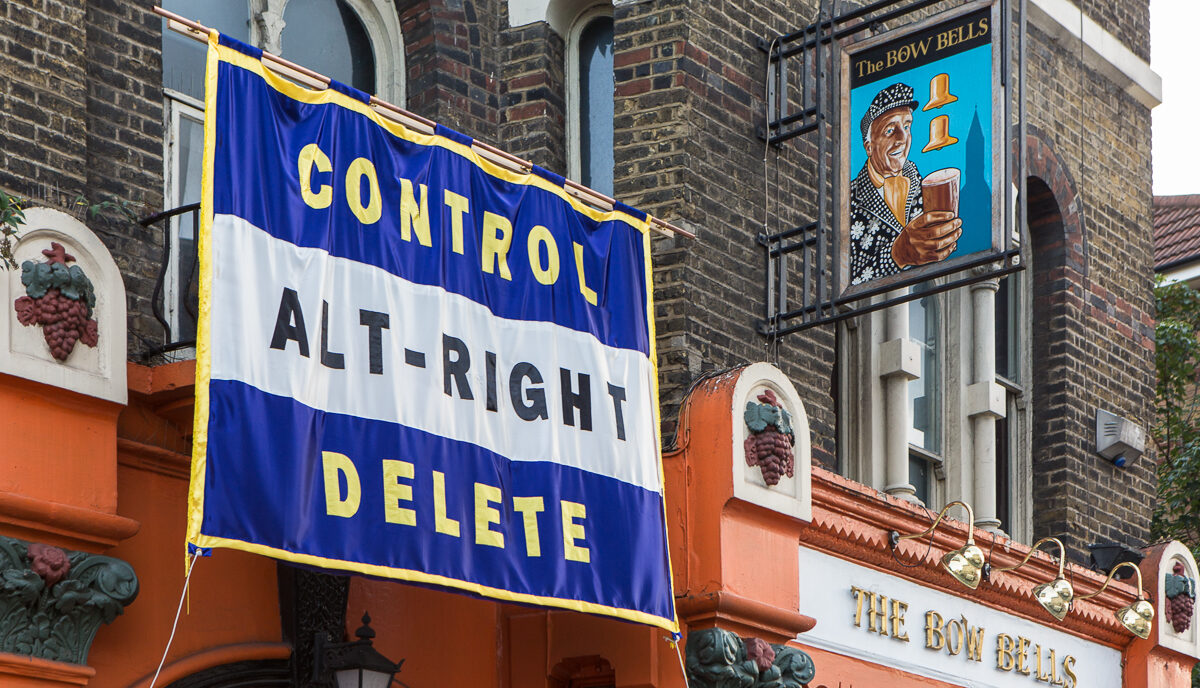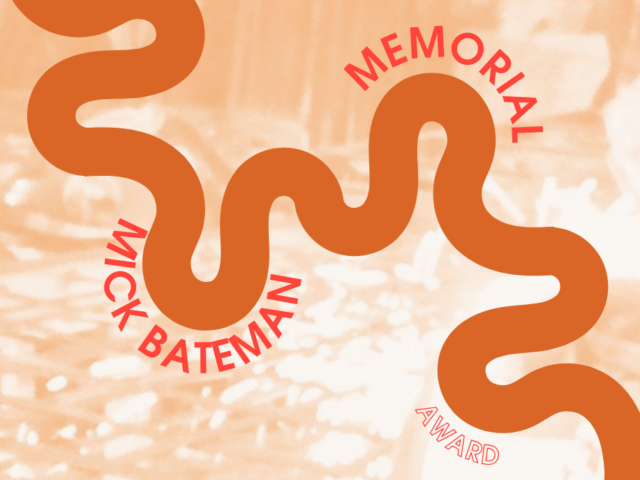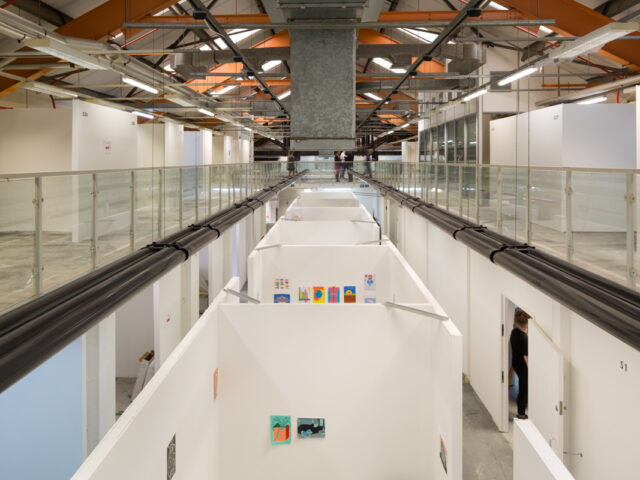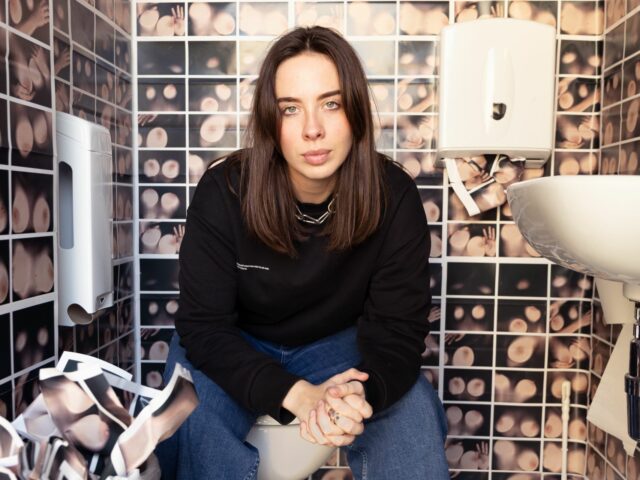CTRL, ALT, DEL – In Conversation with Marcus Orlandi
You may have noticed the new addition to the front of the Bow Bells pub, a large blue and yellow banner by Marcus Orlandi, which sits in conjunction with the Nunnery Gallery’s current exhibition The Working Artist: The East London Group. Though its sudden appearance might have been obvious, the meaning behind it is a little more obscure.
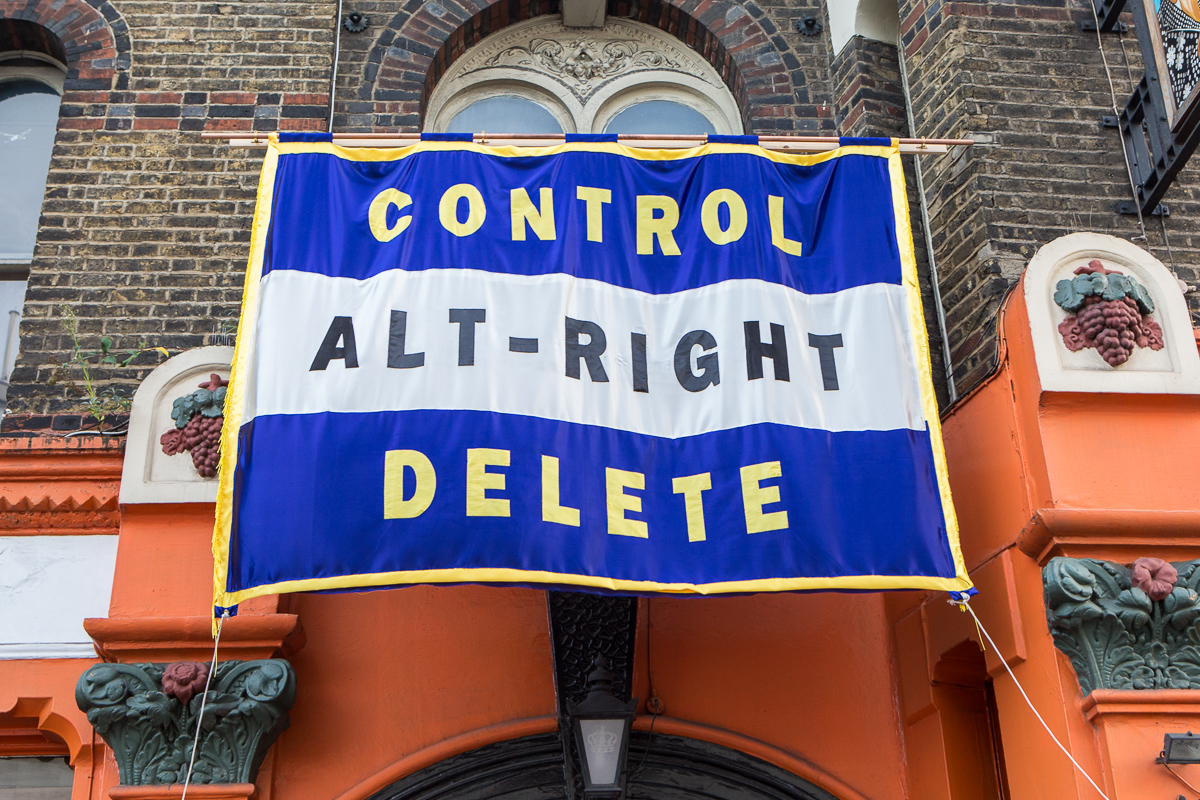
I decided to have a chat with Marcus to find out more about his inspirations; what was it about the East London Group, and Albert Turpin in particular, that inspired him to create a contemporary response to the exhibition?
“When reading up about Albert Turpin and the wider East London Group I found it really interesting that they were so called ‘untrained’ artists with working class jobs: fireman, window cleaner, shop worker etc. I love the idea of labourers doing manual jobs during the week and then taking their work into the Tate and Venice Biennale on a weekend, completely breaking down the class divides that art can sometimes bring.”
Orlandi is known for his politically engaged works that often explore the boundaries between political activism and art. For this piece, Marcus focussed on Albert Turpin’s political background as an activist and Labour Councillor, which was inspired by current issues such as the British referendum in 2016, but what was he intending to achieve with his work?
“Being a public commission I felt the work had to, above all else, look striking. The bright colours, the satin finish of the fabric, even the bright yellow fringe… In terms of intention, all I could say was that I wanted to make something that people could talk about… I wanted the work to still be viewed as an artwork, not a blatant piece of political activism… More art should be political, and some political acts should be viewed as art. I think now is the time we need it.”
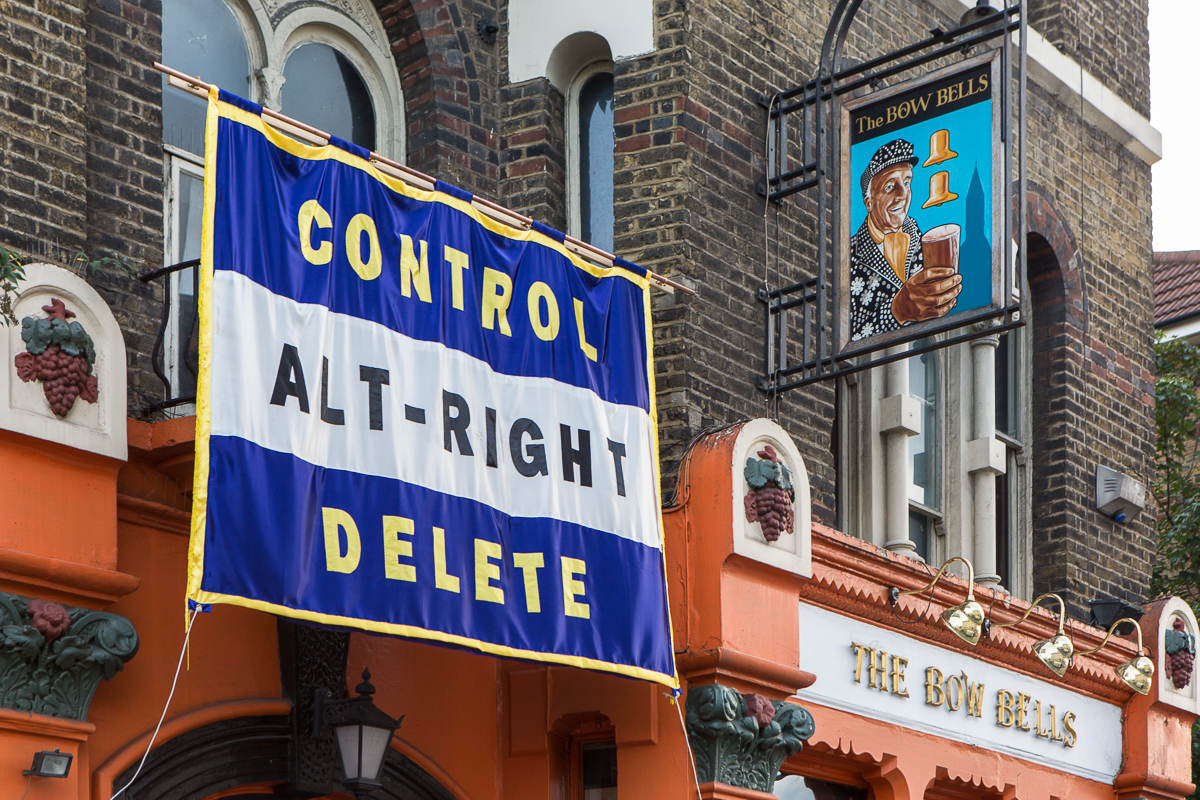
The bright yellow fringing is definitely striking, and is reminiscent of a more traditional political banner or wall hanging, however the slogan ‘Control, Alt-Right, Delete’ draws on very contemporary themes. Marcus has used the language of modern-day technology to address the views of the Alt-Right, or Alternative Right — a group of people who follow far-right ideologies and are widely regarded as white supremacists. But how did he come up with the idea and what does it represent for contemporary viewers?
“I think of the text as a headline, like that splashed across a national newspaper or online article. It’s part wordplay, part didactic soap box shout. I went through countless slogans that could have appeared across the banner, some referencing the “Blackshirts” from the 1930s period, others were more about current issues of the day surrounding migration, xenophobia and Brexit. I was just getting to the point where I thought ‘is this still relevant’ and then the shooting in Charlottesville happened. President Trump wasn’t condemning the KKK and the term Alt-Right was everywhere again. The phrase came to me when reading a BBC article about the tragedy the day after it had happened, and I sadly knew it was all too relevant.”
The parallels between Turpin’s fight against anti-fascism in Cable Street and our own contemporary struggle against extreme views are all too clear. With the political and social history of East London in mind, and the fact that his banner is displayed outside a West Ham pub where there is a longstanding history of violence and social/political tension, I asked Marcus what he thought about his banner being displayed outside the Bow Bells Pub?
“I think context is very important for a public artwork. Originally, the piece was to be installed outside a church, but when the possibility of displaying it outside The Bow Bells arose, I loved the idea. I think it reflects the working class history of the East London Group and I can imagine them going there for a drink after their meetings. The area also showed strain and tensions during the time of the rise of Fascism and the blackshirts, not dissimilar to what is happening today throughout Europe and the West… We live in such a divided time, and I am open to opposing views absolutely, but violence is never acceptable, particularly for something as futile as a banner. I hope the public appreciate it, but most of all I just hope they question it.”

Marcus initially felt a little uneasy about showing his banner outside the Bow Bells pub as he didn’t want to cause any aggravation to the Landlord or the punters, recognising that the banner could be seen as “provocative” to someone who sympathises with the Alt-Right ideology. However, it has had a very positive response so far, with only one notable critique that he decided to share with us…
“When installing the work someone asked me why I was ‘sitting on the fence’ with this message, and that it should say “F*** Fascists” on it. I said he should make that banner himself and display it somewhere, and I hope he does. If this artwork makes people question their surroundings and spread the message further, I think it would be successful.”
This is just one of the Nunnery Gallery’s three public artworks along Bow Road that delve into the lives of working artists like Albert Turpin, and the history of the East London Group as a whole. Each piece is available to see free throughout our current exhibition The Working Artist: The East London Group. For more information on the other works and how to find them click here.
– Written & collated by Saphia Venner, Gallery Assistant
